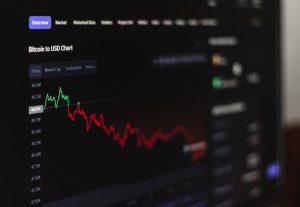Supply and demand levels are the backbone of any financial market, including forex. Identifying these levels is crucial for forex traders as it helps them to make informed decisions about when to enter or exit a trade. In this article, we will explain how to identify supply and demand levels in forex.
What are Supply and Demand Levels?
Supply and demand are the forces that drive the forex market. They are the fundamental concepts that define the market’s behavior. In simple terms, supply refers to the amount of a particular currency that is available for sale, while demand represents the amount of that currency that buyers are willing to purchase.
Supply and demand levels are price points where there is a significant concentration of either buyers or sellers. These levels are important because they often act as turning points where the market reverses its direction. Traders use them to identify potential entry and exit points for their trades.
Identifying Supply and Demand Levels
Identifying supply and demand levels in forex involves analyzing price charts and looking for patterns. Traders use various tools and techniques to identify these levels. Here are some of the most popular methods:
1. Support and Resistance Levels
Support and resistance levels are the most commonly used tools for identifying supply and demand levels. These levels are price points where the market has previously reversed its direction. They act as barriers that prevent the price from moving beyond a certain point.
Support levels are price points where the market has previously bounced back up after falling. These levels represent the demand for a particular currency. Resistance levels, on the other hand, are price points where the market has previously fallen back after rising. These levels represent the supply of a particular currency.
Traders use support and resistance levels to identify potential entry and exit points for their trades. For example, if the market is approaching a support level, traders may look for buying opportunities, as there is likely to be a demand for the currency at that level.
2. Trendlines
Trendlines are another tool that traders use to identify supply and demand levels. Trendlines are lines drawn on a price chart that connect two or more price points. They are used to identify the direction of the trend.
Traders use trendlines to identify potential entry and exit points for their trades. For example, if the market is in an uptrend and the price bounces off a trendline, traders may look for buying opportunities, as there is likely to be a demand for the currency at that level.
3. Candlestick Patterns
Candlestick patterns are another tool that traders use to identify supply and demand levels. Candlestick patterns are formed by the price action on a price chart. They are used to identify potential entry and exit points for trades.
Traders use candlestick patterns to identify potential supply and demand levels. For example, if the market is in an uptrend and a bearish candlestick pattern forms, traders may look for selling opportunities, as there is likely to be a supply of the currency at that level.
Conclusion
Identifying supply and demand levels is crucial for forex traders. It helps them to make informed decisions about when to enter or exit a trade. There are various tools and techniques that traders use to identify these levels, including support and resistance levels, trendlines, and candlestick patterns. By mastering these tools, traders can improve their trading performance and increase their profits.





